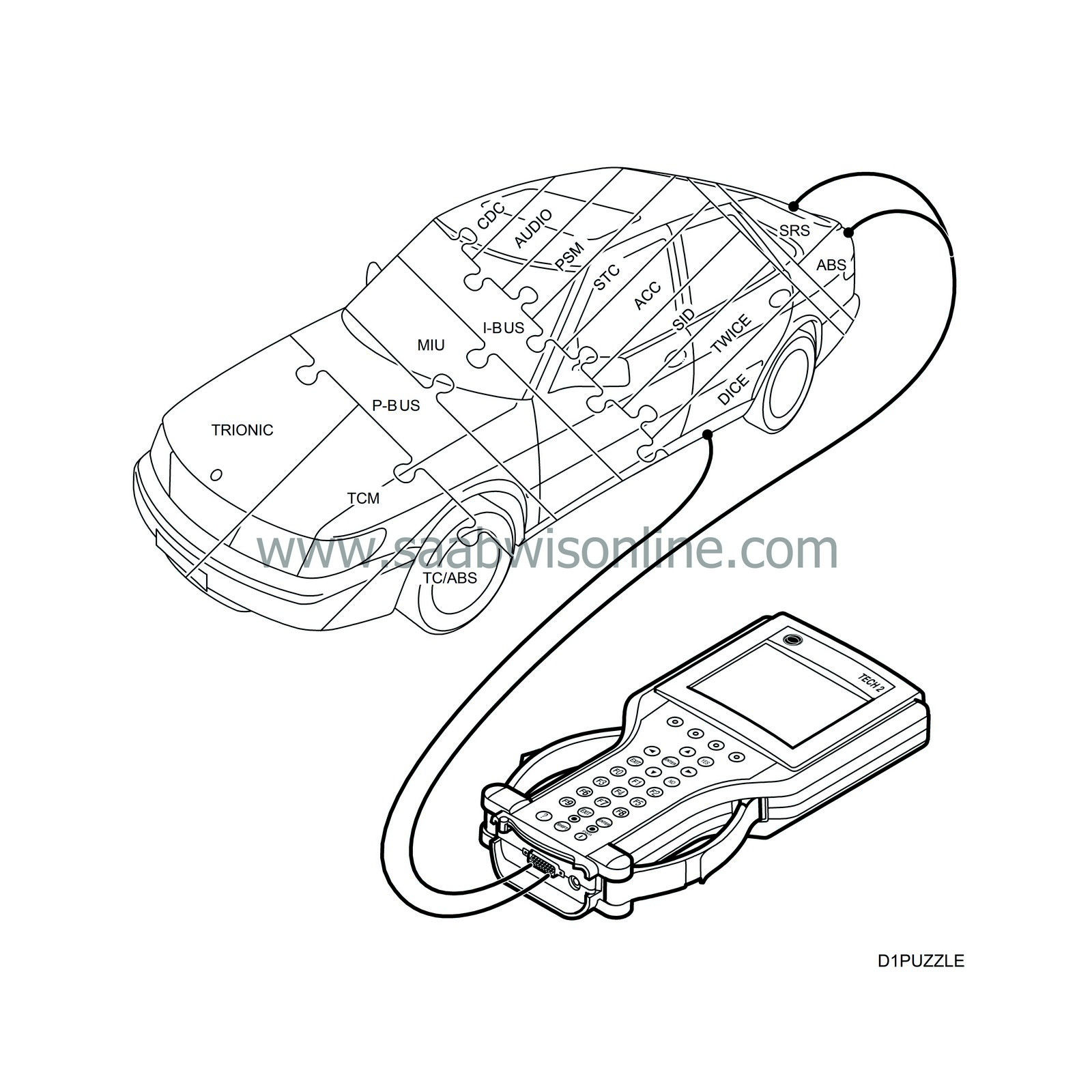Brief description
| Brief description |
The AF20/AF22 automatic transmission is an electronically controlled 4-speed automatic gearbox that is fitted to the Saab 9-3 together with different engine variants.
The AF20/AF22 is principally designed around a 4-speed planetary gear train, torque converter with Lock-Up clutch and hydraulic and electronic control systems.
The transmission is governed by a control module (TCM), which continuously processes information received from its own sensors as well as from other control modules. It controls the hydraulic system in the transmission based on the processed information.
Compared with conventional, hydraulically controlled transmissions, the AF20/AF22 has the following advantages:
| • |
Improved shifting performance and smoother shifting as torque is reduced when shifting takes place.
|
|
| • |
Improved fuel economy thanks to driving programmes optimized to fuel consumption.
|
|
| • |
Selection of varying driving programmes: NORMAL, SPORT, WINTER.
|
|
| • |
Reduced mechanical load on the entire transmission.
|
|
| • |
Self-diagnosis and storage of diagnostic trouble codes.
|
|
| P-bus and I-bus |

P-bus and I-bus in the Saab 9-3, see P-bus and I-bus or System overview
With the introduction of the Trionic 7 engine management system, TCM has become part of the bus communication system. This provides more rapid and better communication with the other systems in the car.The two powertrain systems, EDC 15 and the diesel pump, are however not connected to the I-bus. These systems require considerably faster communication so that no delays are noticeable, e.g. when EDC 15 requests a certain fuel mass for injection.
Therefore, they are connected to a separate bus called the P-bus (Powertrain Bus). The data transfer rate on the P-bus is ten times greater than that of the I-bus.
The P-bus is also connected to the MIU. The MIU is responsible for ensuring that information which is available on one of the buses is also made available on the other bus.
| User recommendations |
Selector lever position P
Position P must only be selected when the car is stationary. The selector lever and the transmission are both locked. The engine can be started.Selector lever position R
Position R must only be selected when the car is stationary. This position cannot be selected without lifting the selector lever detent.Wait a moment before depressing the accelerator to give the reverse gear time to engage properly.
Selector lever position N
With the selector lever in position N there is no connection between the engine and the transmission. The engine can be started. The handbrake should be applied to prevent the car from moving.To avoid excessively high engine and transmission temperatures, N should be selected when the car is at a standstill for lengthier periods.
Selector lever position D
Position D is the normal driving position. After selecting this position, wait a moment before depressing the accelerator to give the gears time to engage properly. The transmission automatically shifts between gears 1-4. The shifting points depend on the position of the accelerator and the speed of the car.Selector lever position 3
In this position 4th gear is blocked. The car starts in 1st gear and then shifts automatically between gears 1-3.Position 3 is recommended for driving on winding roads and in dense city traffic.
If the selector lever is moved from position D to position 3, the transmission will downshift to 3rd gear and more powerful engine braking will be obtained. The selector lever should not be moved to this position at speeds above 150 km/h.
Selector lever position 2
This position is to be preferred when driving in mountainous areas with a heavily laden car. The engine power is utilized more efficiently and the braking power is increased. The transmission shifts automatically between 1st and 2nd gear. Gears 3 and 4 are blocked. The lever should not be put in this position at speeds exceeding 150 km/h.Selector lever position 1
Position 1 should be selected to provide stronger engine braking when descending extremely steep hills.Moving the selector lever from position D to position 1 will result in immediate downshifting to 3rd gear. Downshifting to 2nd gear takes place at about 115 km/h and to 1st gear at about 60 km/h. Downshifting must not be performed manually at speeds above 150 km/h. With the selector lever in position 1, all other gears are blocked.
Towing
The following rules must be observed when towing a car that has automatic transmission.| 1. |
The car must only be towed in the forward direction (front wheels leading).
|
|
| 2. |
The selector lever must be in position N.
|
|
| 3. |
The gearbox must be filled 2 litres above normal level. Use Texaco Texamatic DEXRON III (7045EU, TL1863US) mineral oil based fluid.
|
|
| 4. |
National regulations governing towing speeds must be complied with.
Laws allowing, the highest permissible towing speed is 50 km/h. The longest permissible towing distance is 40-50 km. If it is necessary to tow the car for longer distances, the front wheel must be lifted from the ground. |
|
| 5. |
When the car is ready to be used again the transmission fluid should be checked and, if necessary, drained to the prescribed level.
|
|
| 6. |
The engine cannot be started by pushing or towing the car.
|
|


